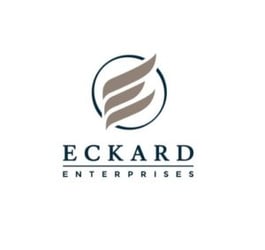Did you know that a Self-Directed IRA opens the door to diversifying your retirement portfolio with mineral investments? One of our Resources, Eckard Enterprises, provides insight into some factors you should research and perform your due diligence on before committing this alternative asset to your Self-Directed IRA.
Everything in the United States requires a barrel of oil to operate, including manufacturing a product, transporting it, supporting it and any other step of the process. In this regard, mineral rights investing seems like a no-brainer since the demand will always be high for oil and gas. This is true to some level, but it’s important to also understand the oil and gas industry is subject to high and low points in the market just like any other industry. How you invest your money as a mineral owner can shape your future. Here are some characteristics about mineral investments and Self-Directed IRAs that you should take into consideration.
Decide Whether You Want to Invest in Minerals
Any money you make with mineral rights investing is your money and you are driving your own investment choices. When you look at the timeline of minerals and IRA usage, you can draw some parallels between them. Putting the money in a Self-Directed IRA means you’re investing it for retiring in the future, rather than having the money available to spend immediately. And since minerals could continue producing for up to 30 years, you will consistently be funding the IRA while it’s growing tax deferred or tax free, depending on the account. Young investors see it as a great vehicle to maximize their earnings over the long term, but older investors could also get return on their money during their retirement years. Depending on who you invest with, you could potentially get the double advantage of monthly cash flow and asset growth.
What Capital Should You Use to Invest?
Another factor of owning minerals is deciding which investment capital you want to use. The source of capital people typically use is either their earned income or their self-directed IRA. There are pros and cons of using each, and the right choice depends on your current financial situation, short-term and long-term goals and more. This question can be easier to answer once you work with an oil and gas investment professional to help you get a clear picture of how you can expect your investments to perform in the coming years.
Perform Your Due Diligence on Mineral Professionals
Choosing to invest with a professional that specializes in minerals and mineral rights investing could provide you with a greater source of information than otherwise possible when investing on your own. There are plenty of companies like this, but the two main factors you want to consider is how they get paid and what the overall benefit is to you when you work with them. Owning minerals is a simple, low risk investment but working with a reputable and trustworthy mineral professional is recommended to ensure you can maximize your oil and gas investment.
Sponsored Content provided by:
Resources are provided for general information and do not represent tax, legal and/or investment advice. Account usage, selection of investments and the performance of those investments are the sole responsibility of the investor and not Preferred Trust Company. Presence on our website does not constitute a recommendation.
Preferred Trust Company strongly recommends that the investor seek professional advice from appropriate legal, accounting and/or tax advisors of their own choosing prior to making investments.





troy eckard
send info